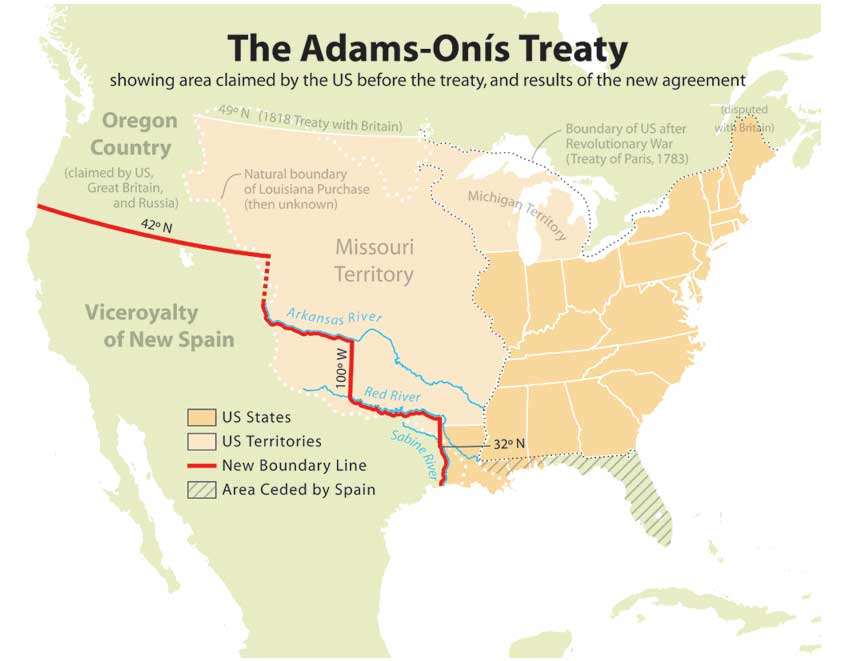1819 Adam-Onis Agreement

Map
The United States acquired Florida under the terms of the Adam Onis treaty with Spain. In return, the US government agreed to assume $5 million worth of debts for which the Spanish were liable. In addition, the US recognized the southwestern border between itself and the Spanish Empire at the Sabine River.
After General Andrew Jackson's military campaign against the Seminole Indians in Florida, it became abundantly clear that Spain, weakened by internal strife and external pressures, could no longer exert effective control over the territory. This campaign, part of the First Seminole War (1817-1818), highlighted Spain's declining influence in the region. The United States government, seizing the opportunity, presented Spain with an ultimatum: either assert control over the territory or face its seizure by the United States. Spain, already overstretched and facing revolutions in its South American colonies, opted for a more pragmatic approach to avoid military conflict.
In this context, Spain agreed to cede the territory of Florida to the United States. Furthermore, they relinquished any claims they might have had on the Oregon Territory, which was also a matter of interest to other powers like Great Britain. In exchange, the United States agreed to pay $5 million and assume responsibility for claims against Spain by American citizens. This financial arrangement was partly to compensate for the damage caused by American actions, including those by Jackson, and to settle various financial claims Americans had against Spain.
The formal agreement, known as the Adams-Onís Treaty or the Transcontinental Treaty, was signed in Washington, D.C., on February 22, 1819, by John Quincy Adams, the U.S. Secretary of State, and Luis de Onís, the Spanish Minister. However, the treaty's ratification faced delays due to bureaucratic and political hurdles in Spain, which was preoccupied with its own crises. This delay led to the unusual circumstance of the U.S. Senate having to ratify the treaty twice. The first ratification occurred immediately following the treaty's signing, but as Spain delayed its ratification, a second ratification by the Senate was required nearly two years later, on February 19, 1821, shortly after Spain finally approved the treaty.
The Adams-Onís Treaty not only gave the United States control over Florida but also defined the boundary between the U.S. and New Spain (now Mexico). This agreement was significant in the context of the Manifest Destiny doctrine, underpinning the United States' territorial expansion westward. It also marked a crucial step in the decline of Spanish influence in the Americas and the rise of the United States as a dominant power in the region.
 >
>